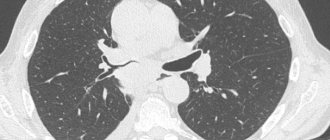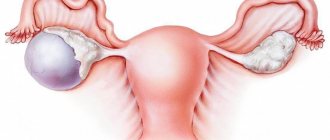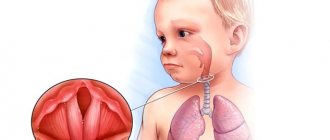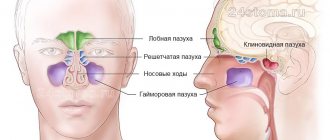Chronic myeloid leukemia is a malignant blood disease in which there is excessive formation and impaired maturation of granulocytes in the bone marrow. A unique feature of this type of leukemia is the presence in tumor cells of a specific marker - the Philadelphia chromosome. It is formed as a result of the t(9;22) translocation, in which one fragment of chromosome 22 changes places with a fragment of chromosome nine. As a result, a chimeric gene is formed that disrupts the process of division and maturation of myeloid cells.
- Causes of development of chronic myeloid leukemia
- Pathogenesis of chronic myeloid leukemia
- Stages of chronic myeloid leukemia
- Symptoms and signs of chronic myeloid leukemia
- Diagnosis of chronic myeloid leukemia
- Treatment of chronic myeloid leukemia
- Prognosis and prevention of chronic myeloid leukemia
Pathogenesis of chronic myeloid leukemia
The Philadelphia chromosome is the result of a reciprocal translocation between chromosomes 9 and 22. In this case, the ABL oncogene from chromosome 9 is transferred to chromosome 22 and attached to the BCR gene. As a result, a hybrid BCR-ABL gene is formed, which regulates the synthesis of a special oncogenic protein - tyrosine kinase bcr-abl. This oncoprotein disrupts the process of cell division, protects tumor cells from programmed death (apoptosis) and disrupts their adhesion to the bone marrow stroma, due to which immature cells enter the bloodstream.
Most often, chronic myeloid leukemia develops as a result of a mutation in a pluripotent hematopoietic stem cell, which is located in the bone marrow, but there are cases when the primary focus is in the liver or spleen.
In chronic myeloid leukemia, the pathology of the granulocytic lineage mainly predominates, but all lines of hematopoiesis can suffer - erythrocyte lineage, monocytes, etc. Healthy stem cells are preserved and can give rise to new hematopoiesis after chemotherapy.
2. Symptoms of the disease
Possible signs of chronic myeloid leukemia may include fatigue, fever, and increased sweating at night.
.
But all these signs may indicate other health problems, not just myeloid leukemia. But in any case, it is better to consult a doctor if you have the above symptoms, and also if you notice causeless weight loss, pain or a feeling of fullness below the ribs on the left side of the body
. It also happens that chronic myeloid leukemia does not cause any symptoms at all.
Most people with chronic myeloid leukemia have a gene mutation in their bodies,
called the "Philadelphia chromosome". This causes the bone marrow to produce the enzyme tyrosine kinase, which causes too many stem cells to develop into white blood cells (granulocytes). The Philadelphia chromosome is not passed on from parents to children, but develops on its own as a genetic defect.
Visit our Oncology page
Stages of chronic myeloid leukemia
During chronic myeloid leukemia, 4 stages are distinguished, which reflect the progression of the pathology. In this case, the disease can be detected on any of them.
Chronic or preclinical stage - has no clinical symptoms; the diagnosis can be suspected by a general blood test, which patients can take either as part of a medical examination or for the diagnosis of another disease. In most cases, chronic myeloid leukemia is detected at this stage.
Acceleration phase, or progression stage. During this period, the number of tumor granulocytic cells increases, and various symptoms appear, for example, weakness or bone pain. Objectively, there is an increase in the number of blasts in the blood or bone marrow up to 15-29%, the number of basophils increases (more than 20%), thrombocytopenia or thrombocytosis is detected (more than 1000×10 9 ).
Blast crisis is a phase during which there is a sharp increase in the number of blast cells (more than 30%) and the disease in its course resembles aggressive acute leukemia.
The patient is in serious condition. There is an increase in temperature, persistent infections, bleeding, and leukemic skin lesions. At this stage, leukemia is difficult to treat.
The phase of chronic myeloid leukemia is necessarily assessed when making a diagnosis and then rechecked as the pathology progresses and the need to change treatment.
Symptoms and signs of chronic myeloid leukemia
The symptoms of chronic myeloid leukemia are characterized by a variety of clinical manifestations and depend on the aggressiveness of the course and stage of the disease. In general, there may be several syndromes:
- Tumor intoxication syndrome. It manifests itself as weakness, weight loss, and loss of appetite that is inadequate to the current state. There may be fever, increased sweating, itchy skin, and bone pain.
- Tumor proliferation syndrome. It develops with an active increase in the number of malignant cells infiltrating the liver and spleen. In this case, patients note pain and heaviness in the left side.
- Anemic syndrome - develops with a decrease in the number of red blood cells and hemoglobin levels. Manifested by weakness, shortness of breath, increased fatigue during routine physical activity. A decrease in pressure, pallor of the skin and mucous membranes, dizziness, and tachycardia may be observed.
- Disorders of the blood clotting system - thrombosis and hemorrhage (bleeding). The cause of thrombosis is most often thrombocytosis (increased platelet level above 1000 × 10 9 / l). In this case, thrombophlebitis, heart attacks, and strokes may occur. Hemorrhagic manifestations are characterized by an increase in bleeding time after injury, as well as the formation of a petechial hemorrhagic rash. They develop against the background of a critical decrease in platelet levels.
Diagnosis of chronic myeloid leukemia
In most cases, chronic myeloid leukemia is an incidental finding that is discovered during examination for another reason. It can be suspected by a general blood test, in particular by an increase in the number of leukocytes and the predominance of granulocytic hematopoiesis in the formula. In this case, not only the number of neutrophils, but also basophils and eosinophils may increase. There may be mild anemia or abnormal platelet counts.
If the doctor suspects chronic myeloid leukemia, the patient is referred for further examination - puncture and bone marrow biopsy. To confirm the diagnosis, it is necessary to conduct a standard cytogenetic study of the bone marrow for the presence of the Philadelphia chromosome. At least 20 metaphases are studied. If cytogenetics is not possible, fluorescent in situ hybridization is used to identify the chimeric gene. The expression of the chimeric gene in peripheral blood cells is also determined by PCR. If a typical transcript is not detected, and there are clinical and hematological signs of chronic myeloid leukemia, detection of rarer mutations is indicated - BCR-ABLp190, p230.
In the blast crisis phase, immunophenotyping of blast cells and cytological and biochemical examination of the cerebrospinal fluid are performed. When chronic myeloid leukemia is detected in the activation phase or blast crisis, the search for the Philadelphia chromosome can be carried out by sequencing the genetic material of blood cells.
Myeloid leukemia is a malignant disease of the blood and bone marrow in which an excessive number of granulocytes (neutrophils, eosinophils and basophils) and their precursors are formed. Granulocytes are a type of white blood cell and are responsible for protecting the body from infections. With myeloid leukemia, they cease to perform their functions and displace normal blood cells from the blood and bone marrow and penetrate other organs, disrupting their functioning.
There are many types of myeloid leukemia, distinguished depending on the speed of development of the pathological process, the maturity of leukemic cells, and changes in chromosomes. Most often, there are two main types of the disease: acute myeloid leukemia and chronic myeloid leukemia.
For any type of myeloid leukemia, complex and fairly long-term treatment is used. Every year more and more effective methods of treating this type of blood cancer appear. The prognosis of the disease depends on the type of myeloid leukemia, the stage of the disease at which treatment was started, and the age of the patient. In general, the prognosis for acute myeloid leuosis is favorable, especially in children. With chronic myeloid leukemia, the prognosis is worse, but with timely initiation of treatment, modern methods of therapy can permanently stop the progression of the pathological process.
Synonyms Russian
Myeloid leukemia, Ph-positive chronic myeloid leukemia, granulocytic leukemia, myeloid leukemia, myeloid leukemia, myelosis, multiple myeloma, acute myeloid leukemia, acute non-lymphoblastic leukemia, acute non-lymphoblastic leukemia in adults.
English synonyms
Childhoodacutemyeloidleukemia, adultacutemyeloidleukemia, acutemyeloidleukemia, acutemyeloblasticleukemia, acutegranulocyticleukemia, acutenonlymphocyticleukemia, chronicmyeloidleukemia, chronicgranulocyticleukemia.
Symptoms
Acute myeloid leukemia usually develops rapidly – within a few weeks. Its main symptoms are:
- weakness;
- irritability;
- dizziness;
- dyspnea;
- frequent infectious diseases;
- fever;
- frequent, prolonged bleeding, possible severe nosebleeds, bleeding gums;
- hemorrhages in the skin and mucous membranes;
- soreness, inflammation of the gums;
- heaviness in the stomach;
- swollen lymph nodes;
- headaches, nausea, vomiting, convulsions.
Chronic myeloid leukemia develops gradually and goes through 3 stages:
1) chronic – there are usually no symptoms;
2) progressive – weakness and abdominal pain appear;
3) blast crisis - at this stage the disease occurs with all the symptoms of acute myeloid leukemia.
General information about the disease
All blood cells develop from a single stem cell, which then gives rise to myeloid and lymphoid stem cells. Lymphocytes form from lymphoid cells, while myeloid cells give rise to the precursors of erythrocytes, platelets and myeloblasts. It is from myeloblasts that granulocytes and monocytes are formed as a result of a chain of successive divisions.
Granulocytes are a type of leukocyte and are called so because of their appearance - under a microscope they contain characteristic dark granules, as well as a nucleus consisting of several segments. There are several types of granulocytes - eosinophils, basophils and neutrophils. Monocytes also have a segmented nucleus, but their granules are light-colored. The main task of granulocytes and monocytes is to fight against foreign agents harmful to the body (viruses, bacteria).
In myeloid leukemia, the bone marrow produces an excessive number of abnormal granulocytes. Gradually, they displace normal blood cells from the blood and bone marrow, which leads to the appearance of characteristic symptoms. When the division and growth of red blood cells is suppressed, symptoms of anemia arise - pallor, dizziness, weakness; when platelet growth is suppressed - blood clotting disorders, frequent bleeding. Leukemia cells can penetrate other organs - the liver, spleen, lymph nodes, brain and spinal cord - causing disruption of their functions and characteristic manifestations. Pathological myeloid cells can also form clusters in the periosteum, mediastinum, and organs of the gastrointestinal tract (chloromas).
Malignant hematopoietic disorders occur due to damage to the DNA of myeloid cells. The DNA of a cell contains information about its growth, division and death and is presented in the cell in the form of chromosomes. Factors that damage the DNA of myeloid cells are not fully understood. The harmful effects of ionizing radiation, previous chemotherapy, and toxic substances such as benzene have been proven. Characteristic changes in the structure and number of chromosomes have also been identified in certain types of myeloid leukemia.
In acute myeloid leukemia, damage to the 8th, 15th, 16th, 17th and 21st chromosomes is often observed. A characteristic feature of chronic myeloid leukemia is the presence of the Philadelphia chromosome. It occurs in 95% of all cases of chronic myeloid leukemia and is formed as a result of the attachment of a section of the 9th chromosome to the 22nd chromosome. The Philadelphia chromosome activates the synthesis of special tyrosine kinase proteins that disrupt myelocyte division. As a result, both mature granulocytes and blast cells appear in the blood.
Acute myeloid leukemia occurs in both adults and children. With it, a large number of myeloblasts are found in the blood and bone marrow. In chronic myeloid leukemia, myeloid cells are more mature and “specialized.” The average age of patients with chronic myeloid leukemia is 55-60 years.
Who is at risk?
- Men.
- People over 60 years of age.
- Smokers.
- Exposed to radioactive radiation.
- Have undergone chemotherapy or radiation therapy for another form of cancer.
- People with Down syndrome and other genetic disorders.
- Suffering from myelodysplastic diseases (this is a group of chronic diseases in which the bone marrow does not produce a sufficient number of full-fledged blood cells).
Diagnostics
Laboratory examination methods
- Complete blood count (without leukocyte formula and ESR) with leukocyte formula. This study provides the doctor with information about the quantity, ratio and degree of maturity of blood elements. Leukocytes. In myeloid leukemia, leukocytes may be elevated, normal, or decreased. The leukocyte formula (the ratio of individual types of leukocytes) is determined from a blood smear. To do this, a thin smear of blood is applied to a glass slide, stained with special dyes, and then examined under a microscope. In this way, the doctor can not only determine the ratio of leukocytes, but also identify pathological, immature cells that differ in appearance from normal ones. Acute leukemia is characterized by the presence of specific inclusions in leukocytes - azurophilic granules and Auer rods. This is a characteristic feature of myeloblasts. In chronic myeloid leukemia, more mature leukocytes are found in the blood.
- Platelets, red blood cells and hemoglobin may be reduced.
- Determination of neutrophil alkaline phosphatase level. This is a special bactericidal substance that is detected only in mature leukocytes. In myeloid leukemia it is reduced, while in other diseases, such as infections, it can be significantly increased.
- Flow cytometry or immunophenotyping. In complex variants of myeloid leukemia, these techniques make it possible to accurately determine the type of malignant cells. Flow cytometry measures cell parameters using a laser beam. Immunophenotyping involves the detection of proteins specific to different cell types on the surface of the leukocyte membrane.
- Cytogenetic studies. Venous blood is usually taken for testing. Blood cells are fixed and stained, after which a specialist examines their karyotype under a microscope - a complete set of chromosomes that is identical in all cells of the human body. Used to identify chromosomal abnormalities characteristic of myeloid leukemia.
Other examination methods
- Spinal tap. It is carried out to determine leukemia cells in the cerebrospinal fluid that washes the spinal cord and brain. A sample of cerebrospinal fluid is taken using a thin needle, which is inserted between the 3rd and 4th lumbar vertebrae after local anesthesia.
- Chest X-ray - may show enlarged lymph nodes.
- Ultrasound examination of the abdominal organs. Helps identify enlarged liver and spleen.
Treatment
- Chemotherapy is the use of special drugs that destroy leukemia cells or prevent them from dividing.
- Targeted therapy is the use of drugs that have a targeted effect on certain types of malignant cells. They interact with certain proteins on the surface of leukemia cells and cause their destruction.
- Immunotherapy is the use of drugs that enhance the body's immune system's response to malignant cells. In the treatment of leukemia, interferon alpha, a specific protein with antiviral activity, is most often used.
- Bone marrow transplant - normal bone marrow cells are transplanted into the patient from a suitable donor. A course of chemotherapy or radiation therapy is first administered in high doses to destroy all pathological cells in the body.
- Radiation therapy is the destruction of leukemia cells using ionizing radiation. Can be used in acute myeloid leukemia to completely destroy leukemia cells before bone marrow transplantation.
Prevention
There is no specific prevention of myeloid leukemia. For timely diagnosis, it is necessary to undergo regular preventive examinations, and if alarming symptoms occur, consult a doctor immediately.
Recommended tests
- General blood analysis
- Leukocyte formula
- Cytological examination of punctates, scrapings of other organs and tissues
Treatment of chronic myeloid leukemia
At the initial stage, before obtaining cytogenetic confirmation of the diagnosis (as we already know, chronic myeloid leukemia is diagnosed in the presence of the Philadelphia chromosome), symptomatic therapy with hydroxyurea is prescribed. Its goal is to reduce the overall level of white blood cells and platelets. If there is intolerance to the drug or insufficient reduction in platelet levels, anagrelide can be used. If there are signs of leukostasis (encephalopathy, visual disturbances, renal dysfunction), leukapheresis is performed.
After cytogenetic confirmation of the diagnosis, specific antitumor therapy is prescribed. The main drugs are tyrosine kinase inhibitors (TKIs). The dosage is selected depending on the level of leukocytes. At the initial stage, to prevent tumor lysis syndrome, enhanced hydration is necessary (additional fluid administration in a volume of 2-2.5 l/m2, if there are no contraindications from the cardiovascular system) and the administration of allopurinol.
The goal of specific treatment for chronic myeloid leukemia is to suppress the tumor cell clone, reduce the risk of pathology progression and prolong the patient’s life to values comparable to general population indicators. With the introduction of TKIs into practice, these tasks became quite feasible and not only made it possible to increase the overall survival of such patients several times, but also to eliminate lifelong medication use and transfer to dynamic observation in patients with a good molecular tumor response.
Currently, according to accepted treatment protocols, TKIs should be prescribed to all patients with newly diagnosed chronic myeloid leukemia. Their mechanism of action is based on the blockade of the ATP-binding pocket of the pathological molecule BCR-ABL, which deprives this protein of tyrosine kinase activity, which stimulates excessive division of tumor cells. With constant use of TKIs, the tumor clone undergoes reduction, which makes it possible to restore normal hematopoiesis.
In Russia, the following drugs from the TKI group are registered for first-line therapy:
- imatinib,
- nilotinib,
- dasatinib.
Imatinib
Imatinib has selective activity against BCR-ABL tyrosine kinase and several other tyrosine kinases. It is prescribed in long courses and must be taken daily. The initial dosage is 400 mg per day for the chronic phase of myeloid leukemia, and 600 mg/day for the accelerated phase or blast crisis. The dosage does not depend on the patient’s height, gender and body weight. The drug is available in tablet form or capsules. Can be used on an outpatient basis. If the result of therapy is unsatisfactory, the dosage can be increased, and if toxic complications develop, it can be reduced.
Nilotinib
Nilotinib is a highly selective BCR-ABL tyrosine kinase inhibitor. It was developed based on the imatinib molecule and modified to increase affinity for BCR-ABL tyrosine kinase. Available in capsules. The dosage for chronic phase therapy is 600 mg/day, for acceleration phase therapy - 800 mg/day. The drug is taken 2 times a day with an interval of 12 hours strictly on an empty stomach, since food increases the bioavailability of the drug, which increases its concentration in plasma and can provoke the development of toxic complications. If the therapeutic effect in the treatment of the chronic phase is insufficient, the dosage may be increased to 800 mg/day. If complications develop, the dose is reduced.
Dasatinib
Dasatinib has activity against many tyrosine kinases, including mutant BCR-ABL. Penetrates the blood-brain barrier. Available in forms for oral use. The recommended dosage is 100 mg/day for the chronic phase and 140 mg/day for the accelerated phase and blast crisis. If chronic phase therapy is insufficiently effective, the dosage may be increased to 140 mg/day. If toxic complications develop, it is reduced to 80 mg/day.
Bosutinib
Bosutinib is a relatively new drug, registered in Russia in 2014 and is used for second and subsequent line therapy in cases of intolerance or ineffectiveness of the above drugs. The standard daily dose is 500 mg, which can be increased to 600 mg if necessary.
The choice of first-line drug is carried out individually for each patient. This takes into account the phase of leukemia, the sensitivity of the tumor clone with individual mutations, the toxicity profile of each drug and the presence of concomitant diseases in the patient.
Determination of the spectrum of mutations is carried out when the pathology manifests itself in the acceleration phase or blast crisis, or when therapy with the selected drug is ineffective and there is a need to change the drug, since there is a possibility of the emergence of resistant clones. For example, mutations F317L/V, T315A, V299L cause low sensitivity to dasatinib, so it is changed to nilotinib. Mutations Y253H, E255K/V, F359V/C, on the contrary, make tumor cells resistant to nilotinib, so dasatinib is indicated for such patients.
Mutations E255K/V, G250E, V299L cause resistance to bosutinib. The presence of the T3151 mutation determines resistance to all types of TKIs, so allogeneic hematopoietic stem cell transplantation is recommended for such patients. Ponatinib therapy is also a possible option, but it has not yet been registered in Russia.
The effect of first-line therapy can be classified into one of three groups:
- Optimal answer. This is a good result, which allows us to hope for a long period of disease-free survival (7-8 years or more). The criteria for achieving optimal response are complete hematologic response within 3 months, complete cytogenetic response within 6 months, and major molecular response within 12-18 months.
- Warning. In the presence of warning factors, careful monitoring of the patient's condition and readiness to change the treatment regimen are required. Prevention factors include a high-risk group for chronic myeloid leukemia, a more than 10-fold increase in the transcription level of the mutant gene, and the presence of additional chromosomal abnormalities in cells with the Philadelphia chromosome.
- Therapy failure. This includes the progression of the disease, the emergence of new mutations, and the appearance of additional chromosomal abnormalities in cells with the Philadelphia chromosome. A change in therapy is required.
Other treatments for chronic myeloid leukemia
Donor stem cell transplantation is indicated for patients who have failed second-line therapy and for patients with the T315I mutation. Patients intolerant of TKIs and unable to undergo transplantation can be treated with hydroxyurea, interferons and cytostatics.
What is CML and how to fight it
Oncohematologist Mikhail Fominykh about chronic myeloid leukemia
Mikhail Fominykh is a researcher at the Russian Research Institute of Hematology and Transfusiology, St. Petersburg. A practicing oncohematologist who devoted his scientific activity to chronic myeloid leukemia, and in 2016 defended his dissertation on this topic. During the discussion, he revealed the main symptoms of CML, talked about risk areas and restrictions, and also explained whether it is possible to give birth to a healthy child with this diagnosis.
What are the main symptoms of CML?
Often the person himself is not particularly worried about anything. Very often, a patient comes to us from another specialist: a therapist or a surgeon. People undergo routine tests and find out that they have an increased number of white blood cells. Having detected elevated leukocytes, the therapist or surgeon refers the patient to a hematologist.
If we talk about symptoms, it may be increased fatigue, sweating, unmotivated rises in body temperature to 38 without obvious signs of infection, heaviness in the left hypochondrium due to the fact that the spleen increases in size. If you monitor your health and get tested every year, chronic myeloid leukemia can be detected at an early stage. Today, 95% of CML cases are diagnosed in the chronic phase and only 5% in advanced, advanced phases. These are the acceleration and blast crisis phases, when symptoms of tumor intoxication begin to appear.
The most striking symptom of the early stage of CML is unmotivated weight loss within six months. If you are not on a diet and are not working on losing weight, but are losing kilograms, and in addition to this, there is increased sweating and a temperature above 38 - this is a reason to be wary and go get tested.
CML in the “advanced” stage is manifested by weakness and increased fatigue due to anemia, increased bleeding from the gums or nose, and bruising may occur. In principle, these symptoms are characteristic of all hematological diseases that are associated with damage to the bone marrow.
How elevated should white blood cells be to suspect CML?
Today, the norm of leukocytes is from 4 to 9 per ten to the ninth power per liter. But you need to understand that these numbers depend on many factors: previous infection, surgery. Just based on the number of leukocytes, no one will say that you have leukemia - in any case, additional examination will be necessary. If increased leukocytosis 10-11 appears once, this is not a reason to run to a hematologist, since this may be a completely normal reaction of the body to a viral or bacterial infection. But if leukocytosis above 15 is observed within three months, then this is a reason to consult a hematologist. We recommend monitoring your blood counts and taking tests at least once a year in order to identify a malfunction in time and begin treatment, if necessary.
Is it possible to say that someone is at risk? Is there a predisposition? Does the environment have an impact?
Heredity plays absolutely no role here. If parents had CML, then it is far from a fact that their children will have it: the hereditary theory has not yet been confirmed. The same applies to all other existing theories: viral, bacterial.
Not long ago there was a terrible story when children with leukemia were evicted from their apartments because the residents of the house believed that cancer could be transmitted by airborne droplets. This, of course, is not true: cancer is not transmitted in this way. If oncological diseases were transmitted by airborne droplets, then I and other oncologists would probably already have died: I saw my first oncological patient in my third year, over 15 years of practice I have seen thousands of them and, fortunately, I am still alive, I am healthy and have no cancer diagnosis.
After exposure to ionizing radiation, the risk does increase: after Chernobyl, Hiroshima and Nagasaki, there was a surge in the development of acute leukemia. This is a confirmed fact, but heredity has no effect on the occurrence of leukemia. Other theories have not yet been confirmed either. Doctors, unfortunately, have not yet identified the cause.
Can we say that CML is an accident, like a brick on your head?
Yes, that's exactly it. I am sitting in front of you now, and you are sitting in front of your gadgets, and a certain number of mutations are happening inside each organism right at this time. This happens while we sleep, eat, or walk down the street. As long as our immune system copes with emerging mutations, everything is fine. When a failure occurs and the system can no longer cope, a tumor process begins to develop. In the case of hematological diseases, a mutation of one cell is enough for this. And it really is like a brick to your head. Chronic leukemia occurs spontaneously; we cannot predict it.
How is treatment for CML constructed?
Imatinib is prescribed in the first line of therapy. If before 1999, after diagnosis, patients lived for 3-4 years, today we can talk about 20-year survival. Patients with CML continue to live a full, quiet life and die just like their peers from cardiovascular diseases, diabetes, and so on. Treatment with Imatinib occurs on an outpatient basis. The patient receives the drug at the pharmacy, takes it at home and lives, in general, like a completely ordinary person. In addition to Imatinib, there are second and third generation drugs. And even on the fourth, they are still undergoing clinical trials.
Is it possible to get pregnant with CML?
When treating with new drugs that are undergoing clinical trials, contraception must be used because we do not yet know how these new drugs may affect the fetus. In the case of already well-known ones, it is necessary to make a decision together with the attending physician, hematologist and gynecologist managing the pregnancy. For example, Ekaterina Yuryevna Chelysheva, who works at the National Medical Research Center for Hematology, has vast experience and a large register of patients with chronic myeloid leukemia who became pregnant and gave birth to healthy children. If the situation allows you to safely discontinue therapy for the period of conception and at least the first trimester, monthly monitoring is necessary. If we see that the molecular response is lost, then for vital indications the therapy will have to be returned.
Unfortunately, complete cancellation is not happening as quickly as we would like. In the case of first-generation tyrosine kinase inhibitors, it takes a little longer. With the second generation - a little earlier: approximately three to five years of constant use. We achieve a molecular response, cancel therapy, and there you go. We are lifting restrictions regarding pregnancy and, in general, most restrictions. This is an ordinary recovered person cured of cancer. It is possible to get pregnant. The only thing that is required is constant monitoring by a hematologist.
Treatment with drugs of the second and subsequent generations allows one to preserve reproductive functions, although previously this seemed nonsense. Now even recommendations for the treatment of cancer recommend discussing their reproductive plans with patients, and only after that prescribing the drug. Today there are drugs that do not have such a strong effect on fertility, and a woman still has the opportunity to become pregnant and bear a healthy child. Nowadays, preservation of reproductive functions is the norm and one of the goals in the treatment of patients with CML. Isn't this happiness?
Are there any restrictions that CML imposes or are there none? What is life like with CML and after CML if we achieve complete remission and stop drug treatment?
I say so rosyly that everyone has won, everyone has won, but to achieve this, close cooperation between the attending physician and the patient himself is necessary. Any changes in life must be discussed with your doctor; you cannot make decisions on your own - only after consultation with your doctor.
The only strict restriction that really exists is the consumption of grapefruit juice. This is strictly prohibited. To put it simply, grapefruit juice interferes with the absorption of drugs with tyrosine kinase inhibitors, and they become ineffective: that is, you take the drug, but it does not work as it should. There are also a number of drugs that can enhance or decrease the effect of drugs, so before starting treatment with a hematologist, you must inform your hematologist about all the medications that you take on a regular basis. If the duration of taking the drugs does not exceed a week, then this does not affect anything, but if therapy is prescribed on an ongoing basis, then a conflict may arise. This is especially true for antihypertensive drugs to normalize blood pressure.
If we talk about sports, then you can gradually return to it after everything - the size of the spleen, blood tests, general well-being - returns to normal. Moderate physical activity is welcome. Our colleagues from the USA recently conducted studies that proved that yoga, breathing exercises, and qigong have a positive effect on the quality of life of patients with myeloproliferative diseases.
Is it possible to go to the sea and undergo sanatorium-resort treatment?
This question is not completely clear. Previously, every cancer diagnosis put an end to any physiotherapy, any sanatorium-resort treatment. Now the only thing I forbid everyone, and not only my patients, but also healthy healthy people, is to avoid increased exposure to sunlight. Swim in the sea as much as you like, but you should protect yourself from the sun. And now we are talking not only about those who are in remission, but also about those who are under treatment and taking medications. If you feel well, your blood test is normal, then the sea is welcome. But active sun should be avoided - this has a detrimental effect on everyone without exception. Increased exposure to sunlight and ultraviolet radiation increases the risk of developing melanoma. This has been proven.
Can CML be completely cured?
Chronic myeloid leukemia is a disease you can live with, and we teach it. There are schools for diabetics, schools for patients with arterial hypertension, and now we run schools for patients with chronic myeloid leukemia: we give lectures, advise patients, educate them so that they know more about the disease than we do. If you have CML, you need to monitor your condition and take control tests every six months. Currently, worldwide research is being conducted on the possibility of completely canceling therapy. In approximately half of patients, therapy is discontinued. In the other half of cases, during the first six months, unfortunately, you have to return to therapy because a relapse occurs. Everything is very individual.
Share this post with your friends:
Prognosis and prevention of chronic myeloid leukemia
There are no specific methods of prevention, since the reasons for the formation of mutations that cause chronic myeloid leukemia are unknown. As for the prognosis, it all depends on the patient’s age, response to treatment and the possibility of allogeneic transplantation. In general, the situation is quite favorable and allows us to hope for a life expectancy comparable to general population indicators. In some patients, it is possible to achieve stable remission and avoid lifelong use of TKIs with regular follow-up.
At the Euroonco clinic, the treatment of myeloid leukemia complies with all modern treatment protocols. In difficult cases, the decision is made by a council of specialists, and when remission is achieved, we pay special attention to regular monitoring of the patient, which also allows us to improve treatment results.
Book a consultation 24 hours a day
+7+7+78
4. Treatment of the disease
Treatment of chronic myeloid leukemia is selected individually for each patient, and generally depends on the patient’s age, the phase of chronic myeloid leukemia, general health and the size of the spleen at the time of diagnosis.
Depending on the phase, treatment for chronic myeloid leukemia may include
:
- Chronic phase of chronic myeloid leukemia
- targeted therapy with a tyrosine kinase inhibitor; high doses of chemotherapy with donor stem cell transplantation; biological therapy (interferon) with or without chemotherapy; chemotherapy; splenectomy; - Accelerated stage-by-stage chronic myeloid leukemia
– transplantation of donor stem cells; targeted therapy with a tyrosine kinase inhibitor; tyrosine kinase inhibitor therapy followed by transplantation of donor stem cells; biological therapy (interferon with or without chemotherapy; high-dose chemotherapy; chemotherapy; transfusion of blood or blood components to replace white or red blood cells to relieve symptoms of the disease; - Blaster phase of chronic myeloid leukemia
- targeted therapy with a tyrosine kinase inhibitor; chemotherapy using one or more drugs; high doses of chemotherapy; transplantation of donor stem cells; chemotherapy as palliative treatment to relieve symptoms of the disease; - Relapse of chronic myeloid leukemia
- targeted therapy with a tyrosine kinase inhibitor; donor stem cell transplantation; donor lymphocytes; biological therapy with interferon.











